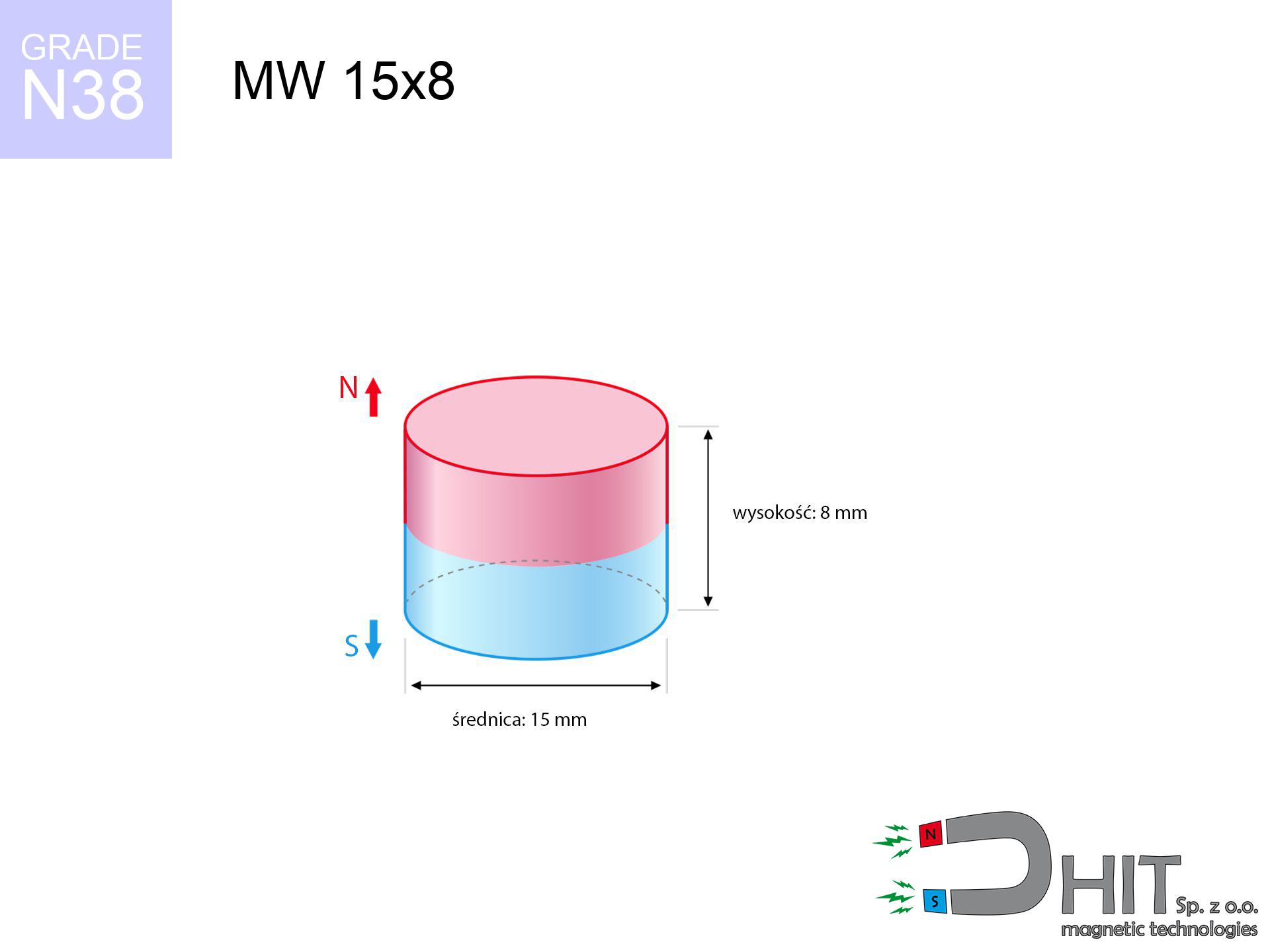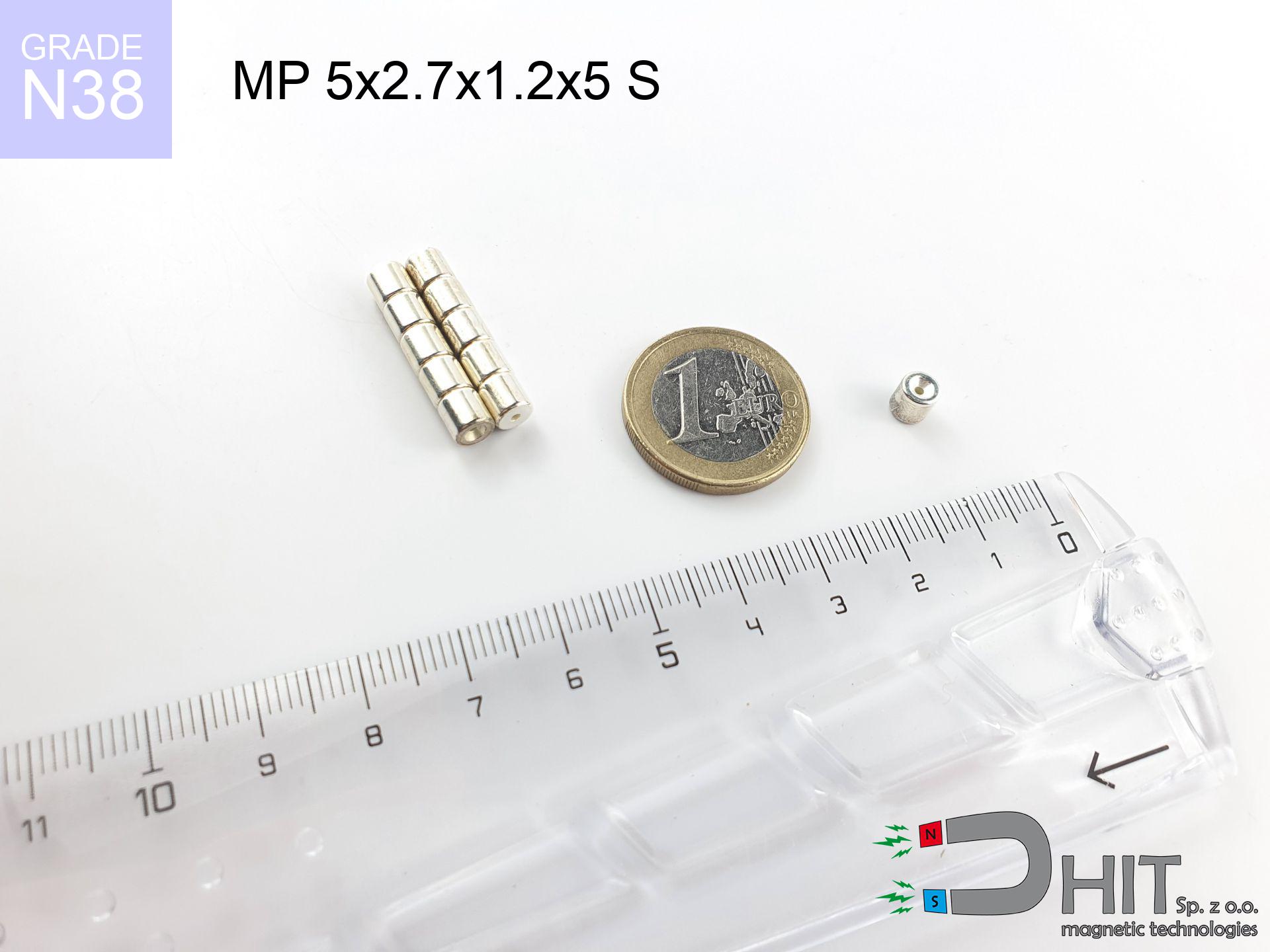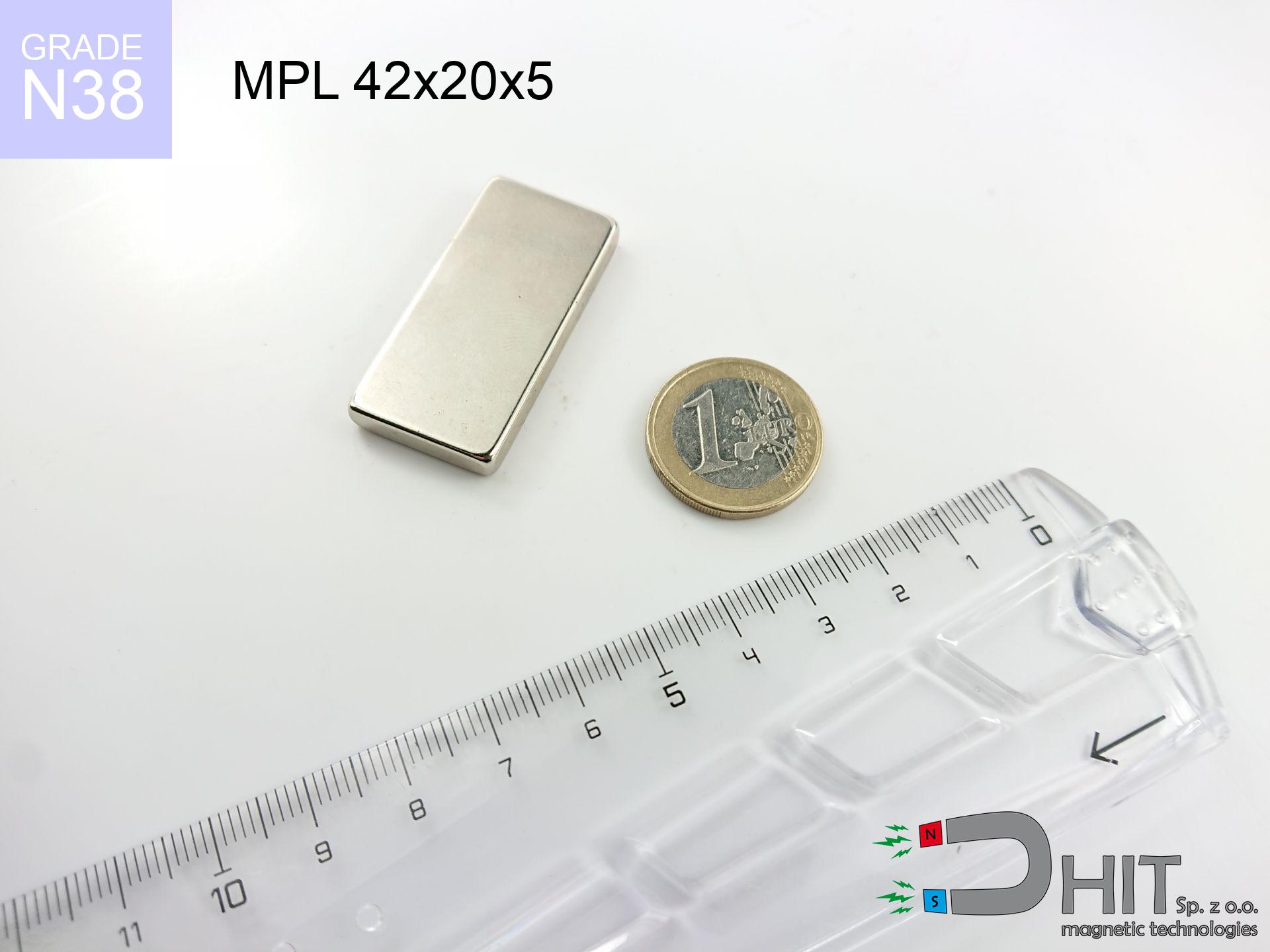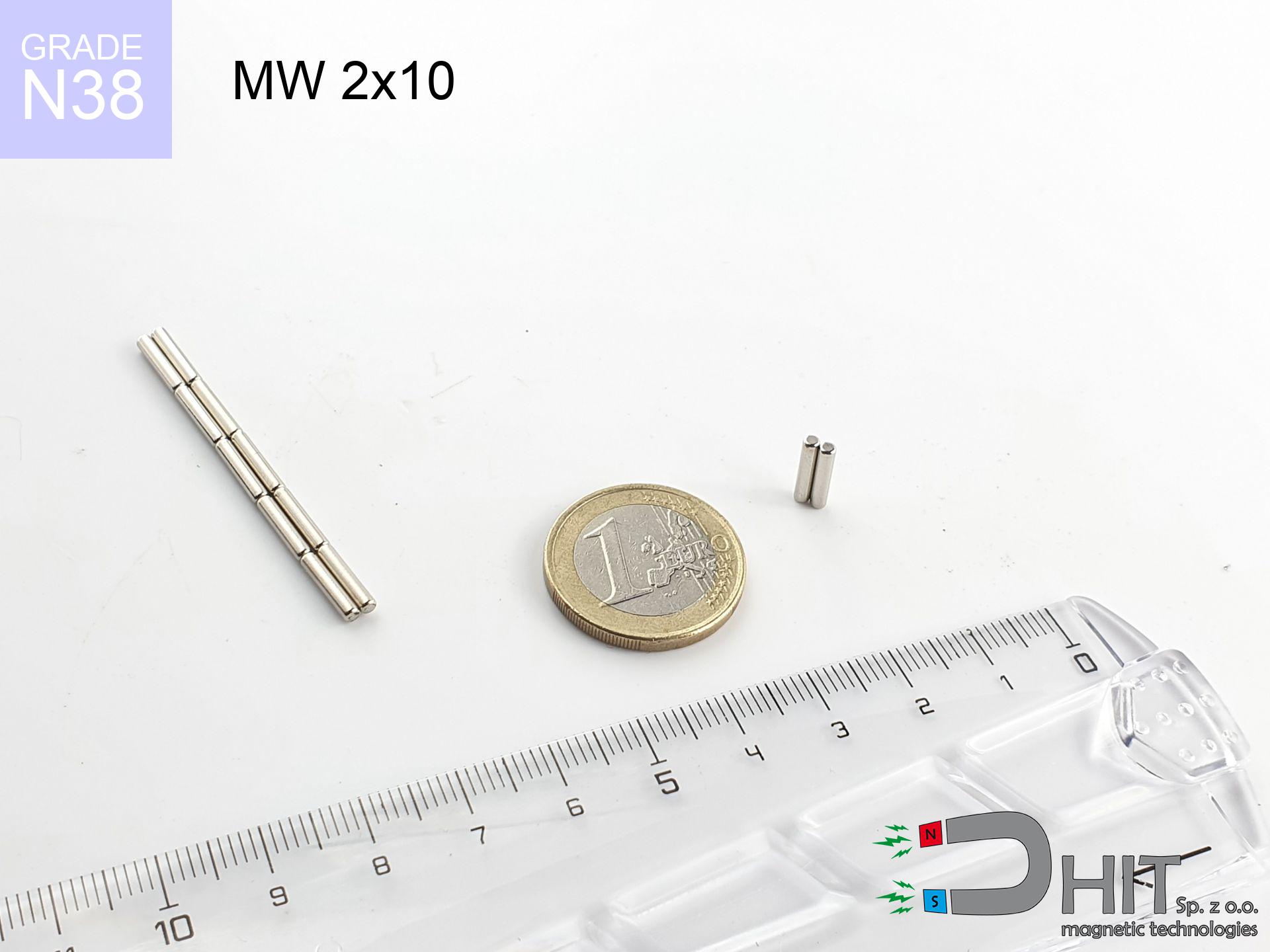MW 15x8 / N38 - cylindrical magnet
cylindrical magnet
Catalog no 010032
GTIN: 5906301810315
Diameter Ø
15 mm [±0,1 mm]
Height
8 mm [±0,1 mm]
Weight
10.6 g
Magnetization Direction
↑ axial
Load capacity
7.59 kg / 74.48 N
Magnetic Induction
451.96 mT
Coating
[NiCuNi] nickel
4.92 ZŁ with VAT / pcs + price for transport
4.00 ZŁ net + 23% VAT / pcs
bulk discounts:
Need more?Need advice?
Give us a call
+48 22 499 98 98
if you prefer get in touch via
request form
the contact form page.
Strength as well as appearance of a magnet can be verified with our
modular calculator.
Order by 14:00 and we’ll ship today!
Magnetic properties of material N38
| properties | values | units |
|---|---|---|
| remenance Br [Min. - Max.] ? | 12.2-12.6 | kGs |
| remenance Br [Min. - Max.] ? | 1220-1260 | T |
| coercivity bHc ? | 10.8-11.5 | kOe |
| coercivity bHc ? | 860-915 | kA/m |
| actual internal force iHc | ≥ 12 | kOe |
| actual internal force iHc | ≥ 955 | kA/m |
| energy density [Min. - Max.] ? | 36-38 | BH max MGOe |
| energy density [Min. - Max.] ? | 287-303 | BH max KJ/m |
| max. temperature ? | ≤ 80 | °C |
Physical properties of sintered neodymium magnets Nd2Fe14B at 20°C
| properties | values | units |
|---|---|---|
| Vickers hardness | ≥550 | Hv |
| Density | ≥7.4 | g/cm3 |
| Curie Temperature TC | 312 - 380 | °C |
| Curie Temperature TF | 593 - 716 | °F |
| Specific resistance | 150 | μΩ⋅Cm |
| Bending strength | 250 | Mpa |
| Compressive strength | 1000~1100 | Mpa |
| Thermal expansion parallel (∥) to orientation (M) | (3-4) x 106 | °C-1 |
| Thermal expansion perpendicular (⊥) to orientation (M) | -(1-3) x 10-6 | °C-1 |
| Young's modulus | 1.7 x 104 | kg/mm² |
Technical Data & Analysis
The table shows theoretical working parameters of the magnet. Real-world results may differ from the simulation.
| Distance (mm) | Induction (Gauss) | Pull Force (kg) | Risk Status |
|---|---|---|---|
| 0 mm | 4518 G | 4.97 kg | Caution |
| 1 mm | 3944 G | 3.79 kg | Caution |
| 2 mm | 3362 G | 2.75 kg | Caution |
| 5 mm | 1931 G | 0.91 kg | Low Risk |
| 10 mm | 763 G | 0.14 kg | Low Risk |
| 15 mm | 349 G | 0.03 kg | Low Risk |
| 20 mm | 184 G | 0.01 kg | Low Risk |
| 30 mm | 68 G | 0 kg | Low Risk |
| 50 mm | 17 G | 0 kg | Low Risk |
| Surface Type | Friction Coeff. | Max Load (kg) |
|---|---|---|
| Raw Steel | µ = 0.3 | 1.49 kg |
| Painted Steel (Standard) | µ = 0.2 | 0.99 kg |
| Greasy/Slippery Steel | µ = 0.1 | 0.5 kg |
| Magnet with Anti-slip Rubber | µ = 0.5 | 2.49 kg |
| Steel Thickness (mm) | % Efficiency | Real Pull Force (kg) |
|---|---|---|
| 0.5 mm |
|
0.5 kg |
| 1 mm |
|
1.24 kg |
| 2 mm |
|
2.49 kg |
| 5 mm |
|
4.97 kg |
| 10 mm |
|
4.97 kg |
| Ambient Temp. (°C) | Power Loss | Remaining Pull | Status |
|---|---|---|---|
| 20 °C | -0% | 4.97 kg | OK |
| 40 °C | -2.2% | 4.86 kg | OK |
| 60 °C | -4.4% | 4.75 kg | OK |
| 80 °C | -6.6% | 4.64 kg | |
| 100 °C | -8.8% | 4.53 kg | |
| 120 °C | -11% | 4.43 kg |
| Air Gap (mm) | Attraction (kg) (N-S) | Repulsion (kg) (N-N) |
|---|---|---|
| 0 mm | 7.46 kg | N/A |
| 2 mm | 4.13 kg | 3.85 kg |
| 5 mm | 1.37 kg | 1.27 kg |
| 10 mm | 0.21 kg | 0.2 kg |
| 20 mm | 0.02 kg | 0.01 kg |
| 50 mm | 0 kg | 0 kg |
| Object / Device | Limit (Gauss) | Safe Distance |
|---|---|---|
| Pacemaker | 5 G | 8 cm |
| Phone / Smartphone | 20 G | 5 cm |
| Credit Card | 400 G | 1.5 cm |
| Hard Drive (HDD) | 600 G | 1.5 cm |
| Start from (mm) | Speed (km/h) | Energy (J) | Predicted Effect |
|---|---|---|---|
| 10 mm | 22.2 km/h | 0.2 J | |
| 30 mm | 37.8 km/h | 0.6 J | |
| 50 mm | 48.8 km/h | 1 J | |
| 100 mm | 69.1 km/h | 2 J |
Shopping tips
Pros as well as cons of neodymium magnets.
Besides their remarkable strength, neodymium magnets offer the following advantages:
- They do not lose strength, even over around 10 years – the drop in power is only ~1% (based on measurements),
- Magnets very well protect themselves against demagnetization caused by external fields,
- The use of an refined finish of noble metals (nickel, gold, silver) causes the element to have aesthetics,
- The surface of neodymium magnets generates a unique magnetic field – this is one of their assets,
- Due to their durability and thermal resistance, neodymium magnets can operate (depending on the form) even at high temperatures reaching 230°C or more...
- Thanks to freedom in constructing and the capacity to customize to client solutions,
- Significant place in innovative solutions – they serve a role in hard drives, electromotive mechanisms, medical equipment, also other advanced devices.
- Thanks to concentrated force, small magnets offer high operating force, with minimal size,
Drawbacks and weaknesses of neodymium magnets and proposals for their use:
- Susceptibility to cracking is one of their disadvantages. Upon intense impact they can fracture. We recommend keeping them in a special holder, which not only secures them against impacts but also raises their durability
- When exposed to high temperature, neodymium magnets suffer a drop in power. Often, when the temperature exceeds 80°C, their strength decreases (depending on the size and shape of the magnet). For those who need magnets for extreme conditions, we offer [AH] versions withstanding up to 230°C
- Due to the susceptibility of magnets to corrosion in a humid environment, we recommend using waterproof magnets made of rubber, plastic or other material stable to moisture, in case of application outdoors
- Due to limitations in realizing nuts and complex forms in magnets, we propose using a housing - magnetic holder.
- Potential hazard related to microscopic parts of magnets can be dangerous, when accidentally swallowed, which becomes key in the context of child health protection. It is also worth noting that tiny parts of these magnets can be problematic in diagnostics medical in case of swallowing.
- High unit price – neodymium magnets have a higher price than other types of magnets (e.g. ferrite), which can limit application in large quantities
Maximum magnetic pulling force – what affects it?
Information about lifting capacity is the result of a measurement for ideal contact conditions, taking into account:
- with the use of a yoke made of special test steel, guaranteeing full magnetic saturation
- whose transverse dimension equals approx. 10 mm
- characterized by smoothness
- with zero gap (no coatings)
- during detachment in a direction perpendicular to the mounting surface
- at temperature approx. 20 degrees Celsius
Practical aspects of lifting capacity – factors
Bear in mind that the application force may be lower depending on elements below, in order of importance:
- Gap between magnet and steel – every millimeter of separation (caused e.g. by veneer or unevenness) drastically reduces the magnet efficiency, often by half at just 0.5 mm.
- Force direction – declared lifting capacity refers to pulling vertically. When slipping, the magnet exhibits much less (typically approx. 20-30% of maximum force).
- Wall thickness – thin material does not allow full use of the magnet. Part of the magnetic field passes through the material instead of generating force.
- Material composition – different alloys attracts identically. Alloy additives weaken the interaction with the magnet.
- Base smoothness – the smoother and more polished the plate, the larger the contact zone and stronger the hold. Roughness acts like micro-gaps.
- Heat – NdFeB sinters have a negative temperature coefficient. At higher temperatures they are weaker, and in frost they can be stronger (up to a certain limit).
* Holding force was checked on the plate surface of 20 mm thickness, when a perpendicular force was applied, however under shearing force the load capacity is reduced by as much as 75%. Additionally, even a slight gap {between} the magnet and the plate reduces the lifting capacity.
Safety rules for work with NdFeB magnets
Crushing force
Risk of injury: The attraction force is so immense that it can result in hematomas, crushing, and broken bones. Use thick gloves.
Medical interference
For implant holders: Powerful magnets disrupt medical devices. Keep minimum 30 cm distance or request help to handle the magnets.
Demagnetization risk
Control the heat. Heating the magnet above 80 degrees Celsius will ruin its magnetic structure and strength.
Safe distance
Do not bring magnets close to a wallet, computer, or TV. The magnetism can destroy these devices and wipe information from cards.
Risk of cracking
Neodymium magnets are sintered ceramics, meaning they are very brittle. Impact of two magnets leads to them breaking into small pieces.
Phone sensors
A powerful magnetic field interferes with the operation of magnetometers in phones and navigation systems. Maintain magnets close to a device to avoid damaging the sensors.
Adults only
Absolutely store magnets out of reach of children. Choking hazard is high, and the effects of magnets connecting inside the body are life-threatening.
Dust is flammable
Dust generated during machining of magnets is combustible. Do not drill into magnets unless you are an expert.
Metal Allergy
Some people suffer from a contact allergy to nickel, which is the common plating for NdFeB magnets. Prolonged contact can result in dermatitis. We strongly advise use safety gloves.
Handling rules
Before starting, read the rules. Uncontrolled attraction can destroy the magnet or hurt your hand. Be predictive.
Caution!
Details about risks in the article: Safety of working with magnets.







![SM 25x200 [2xM8] / N42 - magnetic separator SM 25x200 [2xM8] / N42 - magnetic separator](https://cdn3.dhit.pl/graphics/products/sm-25x200-2xm8-dos.jpg)

